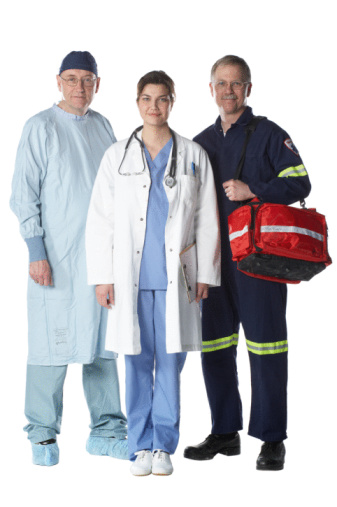Is this the future of CPR? Seattle/King County research improves EMS cardiac arrest survival rates.
As you may or may not know, sudden cardiac arrest (SCA) survival rates vary greatly throughout the United States (defined as those victim who are actually discharged from the hospital). These rates depend on the “Chain of Survival”, a topic addressed in our CPR and First Aid classes. The issues challenging survival include: the level of public education in performing CPR and willingness to provide it, the availability of public AEDs, and the level of professional care (EMTs/paramedics/hospital staff). This blog post will address the last factor, and discuss how local EMS professionals are increasing their knowledge and saving more lives.
The Resuscitation Academy (http://www.resuscitationacademy.com) is a group of Seattle and King County medical professionals who have been increasing SCA survival rates through research and education. They do so by incorporating a standard definition of “survival”, improving SCA data collection and reporting, establishing set methodologies, and incorporating the results and feedback into program improvement.
The two-day Resuscitation Academy course (http://www.resuscitationacademy.com/index.php/program) is open to “administrative directors, medical directors, or active managers of EMS programs or emergency communications centers.” This course is intended to train those who train and manage others, so that this knowledge can effectively  disseminate through their EMS community. Students are encouraged to enroll with other members of their organization in order to multiply the effectiveness of the training. Currently there are openings indicated for the October 21-22 class later this year.
disseminate through their EMS community. Students are encouraged to enroll with other members of their organization in order to multiply the effectiveness of the training. Currently there are openings indicated for the October 21-22 class later this year.
One focus of the research is on High Performance CPR (HP-CPR). CPR training is a continually reviewed program; as new medical information is compiled and reviewed, the guidelines for administering CPR change every five years to accommodate the new findings. The 10 principles of HP-CPR for BLS Continuous CPR (i.e. no pauses in compression for breathes as an advanced airway is in place) include:
- EMTs own CPR
- Minimize interruptions in CPR at all times
- Ensure proper depth of compression (at least 2 inches)
- Ensure full recoil/decompression
- Ensure proper chest compression rate (100-120 per minute)
- Rotate compressors every two minutes
- Hover hands over chest during shock and be ready to compress
- Intubation or advanced airway with ongoing CPR
- Place IV/IO with ongoing CPR
- Coordination and teamwork between EMTs and Paramedics
Videos demonstrating these processes can be found at http://www.resuscitationacademy.com/index.php/resources/.
One interesting point is that in some communities, local protocols include providing 30 seconds to 3 minutes of chest compressions prior to the first analysis, thereby establishing a high rate of blood flow before administering a shock. This is currently a change from the established AED procedures, which recommend a shock as soon as the defibrillator becomes available. This may be one of the changes implemented in the 2015 updates to CPR guidelines that ILCOR will provide.
Current focus on improving BLS/Healthcare Provider CPR includes an emphasis on correct compression and ventilation. It has been established that healthcare provider compression rates vary widely from the 100/minute standard, compression depth is often too shallow, and ventilation occurs at a much higher rate than recommended. A 2004 study indicated that paramedic hyperventilation was often occurring, at a rate of 3x the recommended frequency. All these issues contribute to lower survival rates.
An e-book entitled “Ten Steps for Improving Survival from Sudden Cardiac Arrest” is available via the iTunes Bookstore (https://itunes.apple.com/us/book/ten-steps-for-improving-survival/id603675538?mt=11&ls=1), or in a PDF version at this link. A book entitled “Resuscitate! How Your Community Can Improve Survival From Sudden Cardiac Arrest” by one of the faculty members is also available from the University of Washington Press (http://www.washington.edu/uwpress/search/books/EISRE2.html). While this material is intended for professional rescuers, the science behind the program may be of interest to anyone who would like to see what the future of CPR training may hold for everyone. As the AHA certifications for CPR currently are renewed every two years, students receiving CPR Seattle training now may find their next class incorporating these new guidelines. The future of CPR is literally in your hands!
Enjoy our blog? follow us on Facebook.
Published on July 9, 2013
